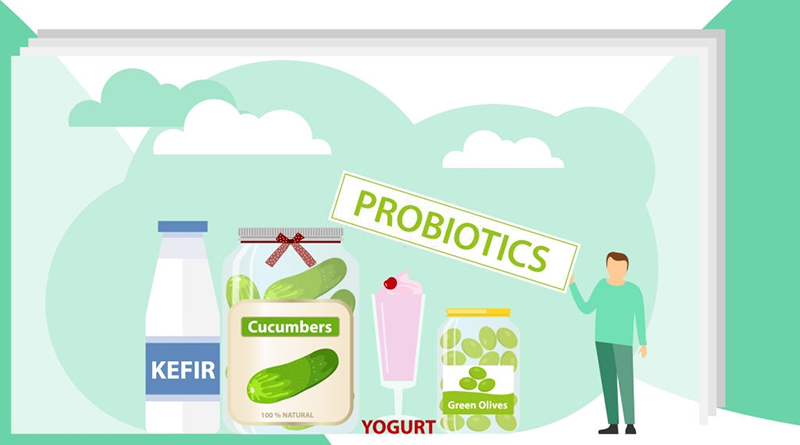A Beginner’s Guide to Probiotics: What You Need to Know
Probiotics are live bacteria and yeasts that are good for your health, especially your digestive system. They live in your gut and help keep your gut healthy. Probiotics are found in many foods, including yogurt, sauerkraut, kefir, kimchi, and tempeh. They are also available in supplement form as capsules, tablets, and powders.
The Benefits of Probiotics
Probiotics are known to have many health benefits. They can help improve your immune system, reduce inflammation, and even improve mental health. Here are a few more benefits of probiotics:
- Probiotics can improve digestion and reduce symptoms of diarrhea, constipation, and bloating.
- Probiotics can help prevent and treat urinary tract infections and yeast infections.
- Probiotics can help lower cholesterol levels and reduce the risk of heart disease.
- Probiotics can help manage eczema and other skin conditions, such as acne.
How Probiotics Work
The gut is home to trillions of microorganisms, including bacteria, yeasts, and viruses. Some of these microorganisms are harmful, while others are beneficial. Probiotics are beneficial bacteria that can help keep the harmful bacteria in check and maintain a healthy balance of microorganisms in the gut.
Probiotics help by producing lactic acid and other substances that create an acidic environment in the gut. This environment makes it harder for harmful bacteria to grow and multiply. Probiotics also compete with harmful bacteria for nutrients and adhesion sites in the gut, making it harder for them to colonize.
Probiotics can also stimulate the immune system and improve the gut’s barrier function. This helps prevent harmful substances from entering the body through the gut and causing inflammation and other health problems.
Types of Probiotics
There are many types of probiotics, but the most common ones are:
- Lactobacillus: This is the most common type of probiotic. It can be found in yogurt and other fermented foods.
- Bifidobacterium: This type of probiotic is found in some dairy products, including cheese and milk.
- Saccharomyces boulardii: This is a yeast probiotic that can help treat diarrhea and other digestive issues.
- Streptococcus thermophilus: This type of probiotic is often used in yogurt and other dairy products.
Choosing a Probiotic Supplement
If you want to take a probiotic supplement, there are a few things you should consider:
- The type of probiotic: Different types of probiotics have different health benefits. Choose a probiotic that will help with your specific health issue.
- The number of colony-forming units (CFUs): CFUs are a measure of how many live bacteria are in the supplement. A higher CFU count means more bacteria, but this doesn’t always mean better results.
- The strain of probiotic: Different strains of the same type of probiotic can have different health benefits. Choose a supplement that contains the specific strain that has been studied for your health issue.
- The form of probiotic: Probiotics come in many different forms, including capsules, tablets, and powders. Choose a form that you find easy to take and that matches your lifestyle.
Taking Probiotics Safely
While probiotics are generally safe for most people, there are a few precautions you should take:
- Start with a low dose: If you’re new to probiotics, start with a low dose and gradually increase it. This will give your body time to adjust to the new bacteria.
- Store probiotics properly: Probiotics are live bacteria, and they can be killed by heat, moisture, and air. Store your probiotics in a cool, dry place.
- Be aware of possible side effects: Some people may experience side effects from taking probiotics, such as gas, bloating, and diarrhea. If you experience these symptoms,







